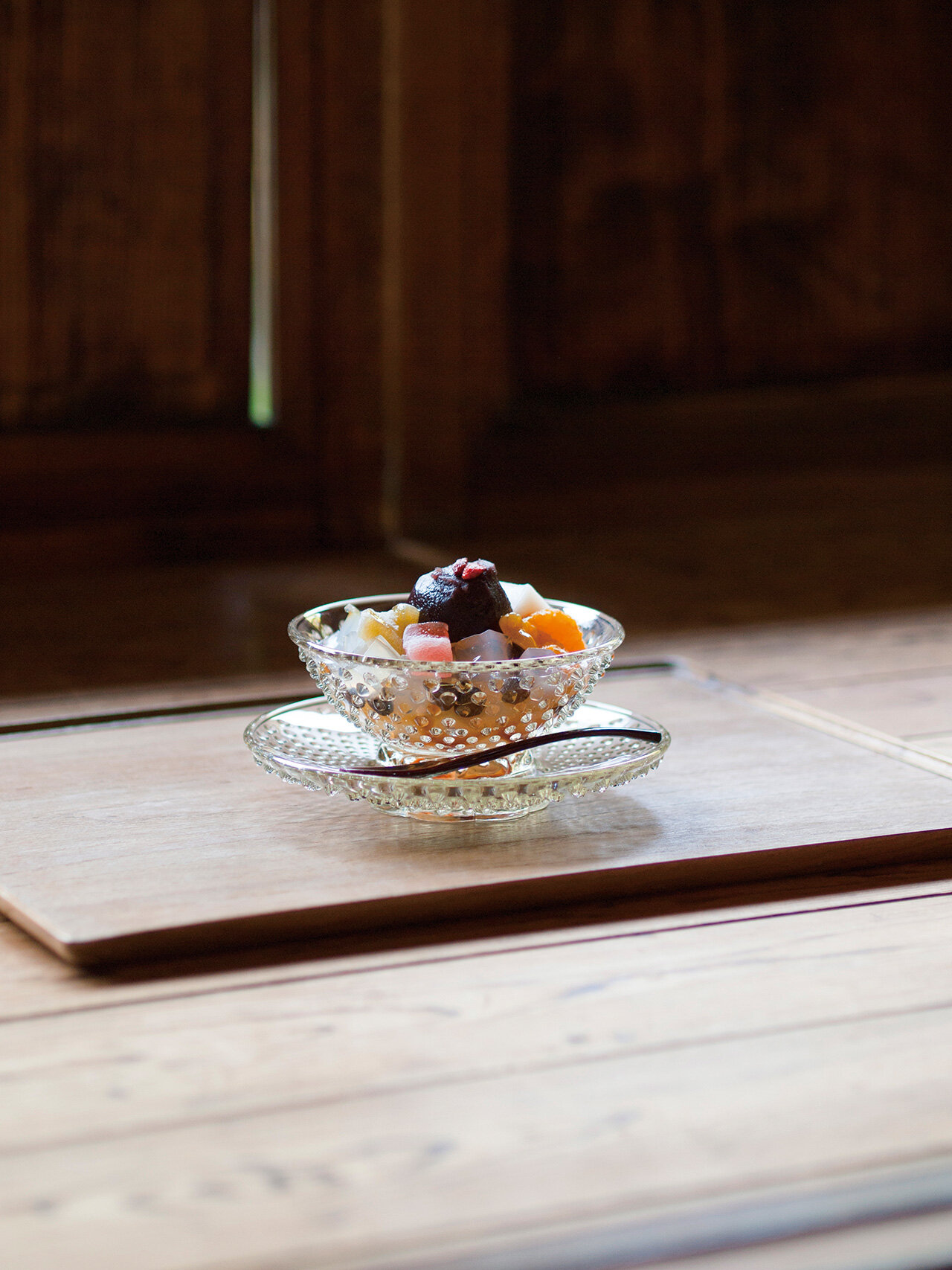PUIFORCAT || Building A Heritage of Craftsmanship in Silverware Since 1820

Do you pay attention to the slender and artistic curves or modern and sleek lines of cutlery, tableware, and homeware?
The item you hold in your hand embodies the story of decades of evolution for the brand and is the result of many hours invested by a team of artisans to perfect the piece. This is especially true for the Parisian heritage brand Puiforcat, where an iconic piece from their collections can take many steps and days or weeks to create.
Established in 1820 in Paris, heritage silver maker Puiforcat has set the standard for excellence in silversmithing for close to two centuries, turning dining and decorating into an art with its sophisticated and timeless creations.
With boutiques in over 30 countries around the world, Puiforcat continues to raise the bar in the industry with its experienced artisans and a focus on craftsmanship. Many may have heard of the name, but few have explored the full story. We had the pleasure of speaking with the Puiforcat team to discover the brand’s heritage, values, and plans for the future.
PM: Pendulum Magazine
LD: Luc Delambre, General Manager, Puiforcat
PM: Jean Puiforcat was named Master Silversmith in 1920; how does one earn the title of Master Silversmith?
LD: Nowadays, the title of silversmith is awarded to young trainees after a couple of years of academic learning in a school followed by an apprenticeship in a workshop and the completion of a personal piece, reflecting the different skills acquired throughout the training. It is an official diploma, the equivalent to a certificate of professional competence.
Jean Puiforcat followed a slightly different path. As a young man, his dream was to become an architect. But the first World War thwarted his plans. When the war broke, he enrolled in the army at the age of 17 to defend his country. Upon his return, four years later, he decided to join his family business and started as a plain apprentice in the company’s workshop. He spent the first years learning the basic skills of the different trades (silversmithing, planishing, polishing, ..). In keeping with the tradition, he concluded his training with the completion of a personal piece which owed him the praise of all the masters in the workshop; and earned him the title of Master Silversmith and his ability to join their rank. His technical training was complemented by rigorous study of art history under the tutorship of M. Giot (a renowned silversmith and sculptor at the time) who showed him all the treasures of the past in the Parisian museums. Finally, Jean learned the art of sculpture under the tutorship of Louis-Aimé Lejeune, a famous artist of that time.
Jean always considered himself a “silversmith- sculptor”, which were the titles he had printed on his business cards.
PM: Since it takes 10 years of training before craftsmen can begin working with silver, how does the company attract new talent to succeed the current team?
LD: Attracting young talents to our workshop is indeed a challenge. Academic training is getting scarcer and only a few young talented people know enough about silversmithing to understand it is a very exciting field for them. So, in a way, we are getting back to the old days: we hire young talented people who show an eagerness to learn and we train them.
Now, any young silversmith in training knows that once you have earned the basic skills in metal shaping, joining Puiforcat is a great opportunity. We can probably say that, today, we are one of the few silversmiths to maintain a comprehensive workshop in France. As a young apprentice, not only will you be trained by some of the most talented silversmiths in the field, but you will also work on some of the most beautiful pieces inherited from the past and new creations.
PM: With a small team of 15 and many items taking several hours to complete, can you provide an estimate of how many pieces are completed each year?
LD: Our workshop is mostly dedicated to the production of our prestige offer in sterling silver, editions of classic and Art Déco heritage pieces from our archives. Pieces can be extremely different from one to another so work time varies a lot, depending on their size, the technics involved and the level of details for each of them. An 18th-century serving tray which surface is entirely planished by hand and embossed to create a decorative motif will require hundreds of hours for example. So, from one year to another, depending on our order book, our production is very flexible.
Artisan engraving an item
PM: How does the brand select which contemporary designers to collaborate with? Are there set criteria the team looks for when evaluating each potential partnership?
LD: These collaborations are formed on the recommendation of our art directors who will identify the best matches for our new products. Their choices go to designers whose work cultivates a certain kinship with Puiforcat’s vision on design, a shared quest for timelessness and radicality.
PM: How frequently are new collections released?
LD: We do not follow any strict agenda. The development of new products can take from 2 to 3 years. There is a close collaboration between the designers and the workshop to give life to a drawing. We launch a new collection when it is ready.
PM: When did Puiforcat start collaborating with contemporary designers? Design-wise, how have these collaborations impacted the brand’s direction?
LD: Silversmithing has always been about mixing innovative art with traditional techniques. Silversmiths were often accomplished artists themselves (think about the outrageous Benvenuto Cellini in 16th century Italy). So the idea of collaborating with designers and artists has existed for centuries, it is in a way native to this craftsmanship.
The most defining moment for Puiforcat was as early as the 1920’s when Jean Puiforcat designed his first amazing Art Deco creations then edited by his father's workshop. He was a very prolific creator, very much ahead of his time, being part of the avant-garde group of artists of the time (including Mallet-Stevens, Charlotte Perriand, Le Corbusier, etc.). He deeply influenced what Puiforcat means today.
Nowadays, collaborations between Puiforcat and contemporary designers keep alive this fertile mix of innovative art and traditional craftmanship, for the pleasure of its customers.
Illustrating the shaping process from material to finished product
PM: Can you take us through the steps required to produce a silverware item? Take for example an item from the cutlery collections, how many craftsmen are involved in the process, and what are the steps from start to finish?
LD: There are three main production steps for one piece of cutlery, each of them handled by a different artisan and divided into several stages.
All pieces are produced one by one, with great attention to details: first, there is the shaping. The initial metal blank is rolled and cut over several stages to obtain the outline of individual pieces of cutlery. The next step is decoration by stamping: the blank is placed under a dropped hammer with two steel matrixes delicately engraved with the desired pattern. The drop hammer strikes the blank and stamps the motifs in the metal. Finally, the finishing, a very precise four-step polishing process is necessary to gradually remove all the tears and wears left after the precedent steps and give the piece its final shine.
The creation of a single piece involves multiple artisans and many hours
PM: How would the team describe the evolution of the brand’s signature style since the brand’s inception? Is there a signature style?
LD: Obviously, our signature hit a few important milestones over the course of its bicentenary history. The most noticeable ones are embodied by strong personalities. First, we can mention Louis-Victor Tabouret-Puiforcat who joined the company at the end of the 19th century. A great collector of ancient silversmithing from the 17th and 18th centuries, he transformed the family cutlery into a renowned Parisian silversmith, offering renditions of the classic treasures he collected throughout his life. Most of his collection is now displayed at the Louvre Museum in Paris. Then came his son, Jean Puiforcat, and his prolific creative work, largely influenced by Art Deco. Over two decades, he transformed the traditional silversmithing vocabulary and propelled Puiforcat into the 20th century.
Today, under the wing of the Hermès group, the company is renowned for its virtuoso skills in silverwork but also for its strong sense of design and elegance. Our heritage is still very well represented in our catalogue, and our contemporary collections contribute to building tomorrow’s heritage.
PM: Which items take the longest to complete and why?
LD: The classic pieces are probably the most time-consuming pieces to make. They require all the different craftsmanship of the workshop and great coordination of all the artisans. The exuberant “François-Thomas Germain” tea and coffee set (named after the silversmith who first imagined this incredible ensemble) which was designed in the 18th century, is probably the most noticeable masterpiece of classical design and an incredible challenge for craftsmen to execute! The tray alone will require 14 kilos of sterling silver and 90 hours of planishing.
The exuberant “François-Thomas Germain” tea and coffee set
PM: Which collection best captures the brand’s values and why?
LD: We recently launched a contemporary interpretation of the tea and coffee set, a recurrent theme in silversmithing. This design really reflects what Puiforcat stands for today – underscoring both radicality and elegance in the details, functionality, and timelessness. The collection is named Phi and was designed by the French duo Normal Studio. Jean-François Dingjian and Eloi Chafaï practice what they call “elementary design.” Specifically, they seek out the perfect shape and proportions to accentuate use. A concept very much aligned with the heritage of Jean Puiforcat.
Phi by Normal Studio
PM: Looking forward to the future, what home entertaining and/or decorating trends do you foresee driving the direction of Puiforcat’s designs?
LD: The current situation triggered a new demand for home items. I believe we realized how important it is to dedicate more attention to our homes. And the saying “Home sweet home” probably took a new meaning. At Puiforcat, the situation only reinforced our convictions that strong designs and quality of craftsmanship are essential to set us apart.
I also believe in personalization and we are currently working on strengthening the options we can offer our clients to make their purchase unique.
PM: If you had to choose 3 words to embody the essence of the Puiforcat brand, what would those words be?
LD: Art, Function, Craftmanship
We want to thank the Puiforcat team for sharing these insights and stories into the brand’s heritage. It’s evident how the brand has built upon its brand values over its extensive history, focusing on the 3 words the team has chosen to describe the essence of the brand. The brand’s designs continue to evolve with the times and manage to stay true to its longstanding heritage designs. We urge you to visit the website to discover the brand’s story, which the team has artistically segmented into collections A to Z.
We expect consumers to shift their attention to become more conscious of the dining experience both at home and for outings, and pay more attention to how tableware and fine utensils can elevate the experience to be much more enjoyable and memorable. This is a landscape that has long been dominated by Puiforcat, a brand that has secured a spot in the hearts of its many loyal fans. We can’t wait to see what exciting new ventures lie ahead.
Photos courtesy of Puiforcat





